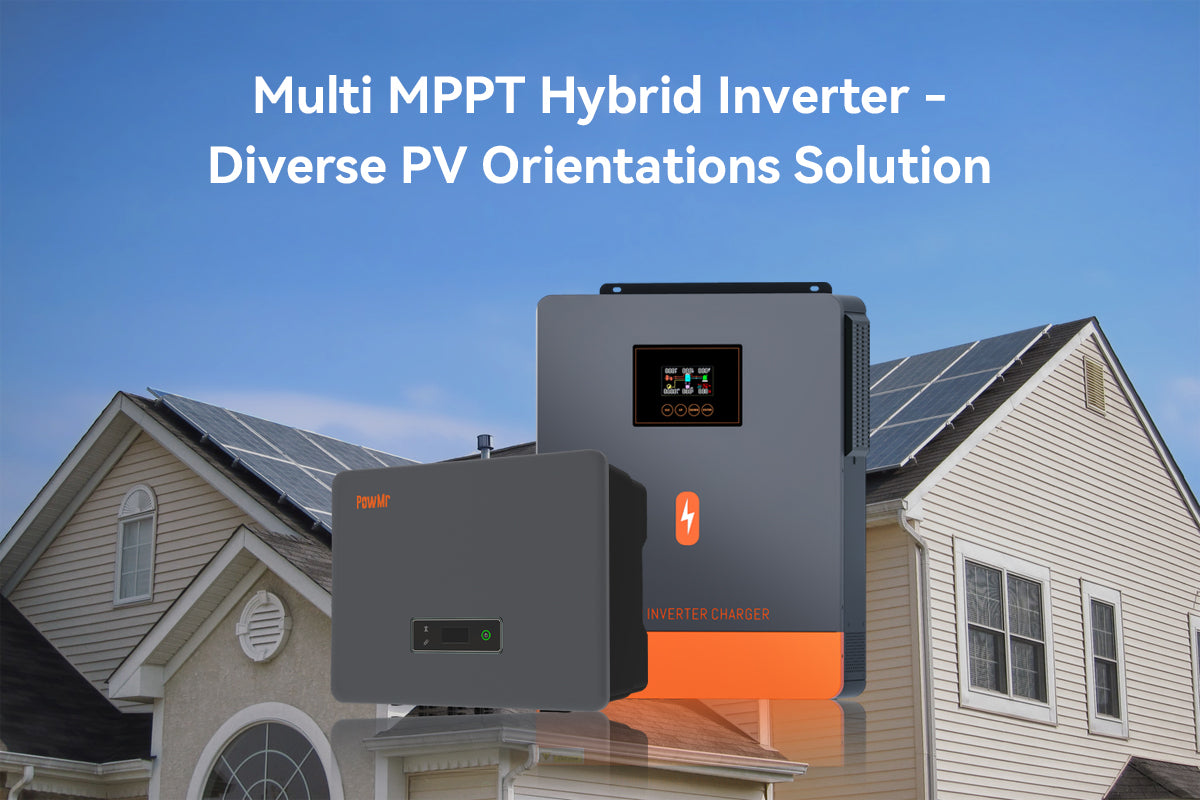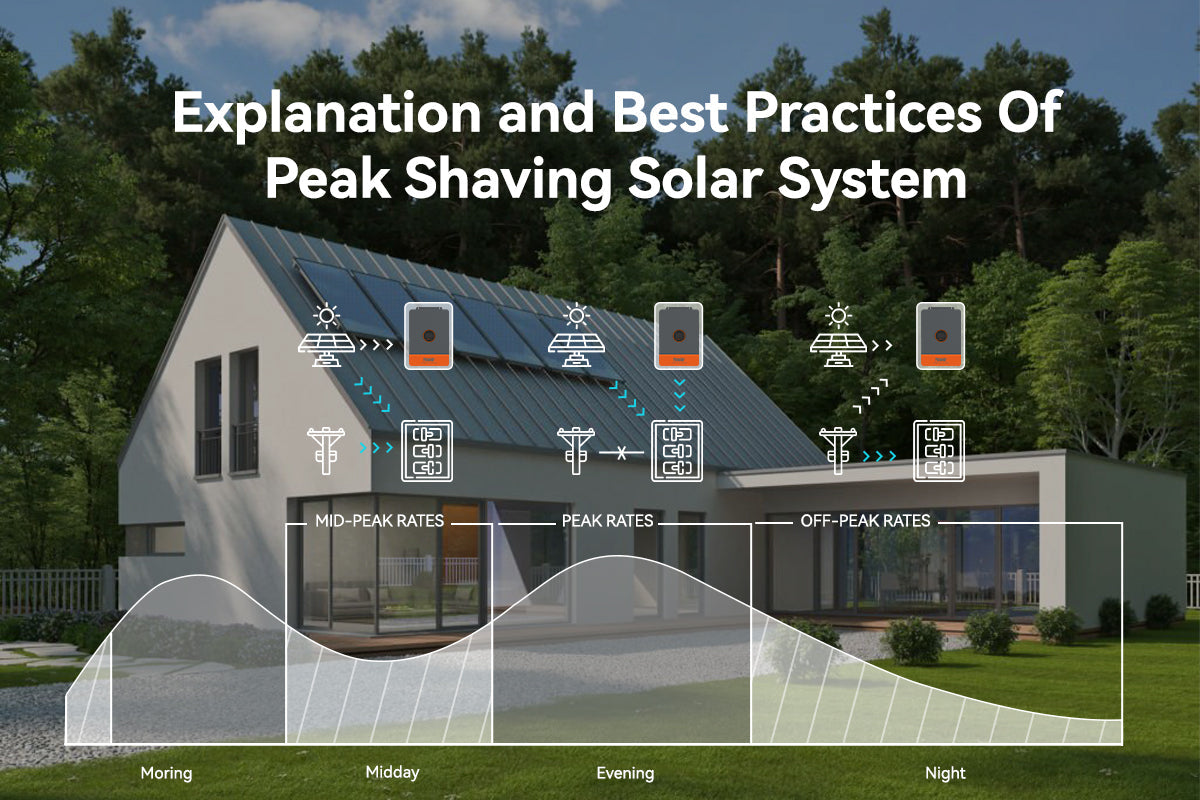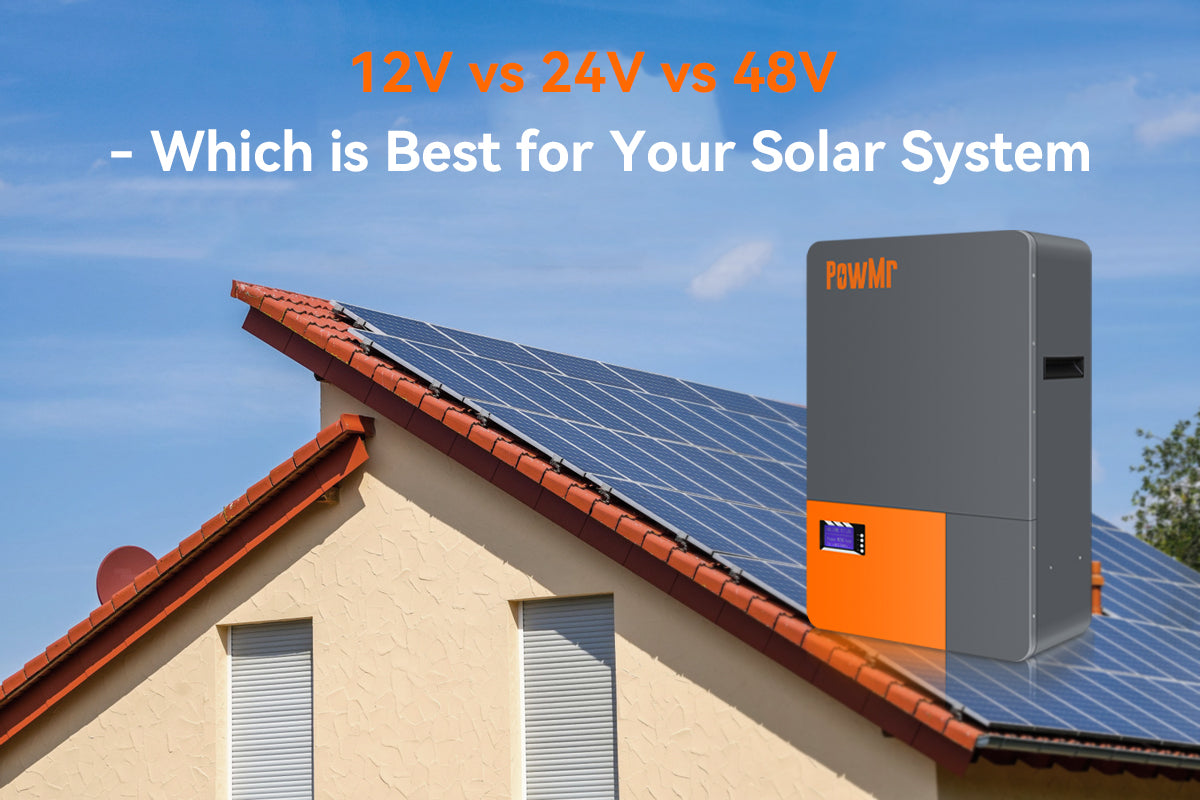In ideal conditions, the best roof orientation for solar panels is typically facing south, as it maximizes sun exposure throughout the day. However, real-world solar array layout design is significantly influenced by various factors, such as the inherent roof orientation limitations of the building, potential obstructions in the vicinity, variations in roof's pitch,and other variables that come into play.
To accommodate diverse panel orientations and address the challenges posed by environmental and structural constraints, it necessitates flexible and adaptive solutions, leading to the demand for Multiple MPPT Hybrid Inverters.
What is Multiple MPPT Hybrid Inverter
A Multiple MPPT Hybrid Inverter takes the Maximum Power Point Tracking Technology a step further by integrating multiple MPP trackers to handle power from multiple strings/arrays or orientations of solar panels independently.
This means that even if you have panels facing different directions or at varying tilt angles, the inverter can optimize each set separately, maximizing your overall energy production.
Application of Dual MPPT Hybrid Inverter in East-West Orientation Solar Panel System
One of the most typical applications of Multiple MPPT Hybrid Inverters is in east-west orientation solar panel systems. East-west orientation means that your solar panels are spread across two sides of your roof – one side facing east and the other facing west. This can be a challenge for single MPPT inverters, as they can only optimize one orientation at a time.
In contrast, dual MPPT hybrid inverters, able to track two maximum power points simultaneously, prove to be a game-changer.
For example, the POW-HVM10.2M is equipped with two wide voltage range mppt's (90-450Vdc), which allow the solar array to be divided into two separate parts (maximum PV array power: 5400W/5400W), each connected to a mppt channel.
Dual MPPT Inverter Setup - Video Tutorial
Tips:
Each MPPT requires a minimum startup voltage, potentially delaying operation in the early morning when sunlight may be insufficient. To optimize energy yield, a lower MPPT startup voltage is crucial.
If one of the PV arrays reaches the minimum starting voltage (90V), the mppt starts to work, extracting and delivering the maximum available power according to the solar irradiance of the day, independently of the other module array.

Here, we'll explore how they maximize energy production in this specific setup.
In the early hours of the day, when the sun rises in the east, the east-facing solar panels benefit from direct and intense sunlight, reaching their maximum power point (MPP). On the other hand, the west-facing panels are yet to receive direct sunlight and are operating at a lower efficiency.
At midday, both east and west panels receive direct sunlight, and dual MPPT inverters maximize power output from both sides. They adapt to changing conditions in real-time, ensuring balanced and efficient power generation.
When the sun sets in the west, the focus shifts to west-facing panels to maximize the power generation. Simultaneously, east panels are adjusted for efficient operation in lower light conditions.
The dynamic interplay of panel orientation and dual MPPT capabilities enhances overall system efficiency.
Comparing Single MPPT and Multiple/Dual MPPT Inverters
Due to the complexity of solar power systems, a multi-MPPT inverter offers additional advantages compared to a single MPPT inverter. Here is a more comprehensive view of Multiple MPPT Hybrid Inverters, it's essential to compare them with Single MPPT Inverters:
Orientations Flexibility
Single MPPT Inverters are optimized for uniform orientations, like south-facing panels. In contrast, Multiple MPPT Inverters excel in accommodating varying panel orientations and tilt angles, making them ideal for complex roof layouts such as east-west orientation.
Different PV String Length
Each MPPT just can handle only one module type, so all strings connected to a single MPPT inverter must be of the same type, while having Multiple MPPT solar charge Controller provide greater flexibility to adjust string lengths depending on roof space.
Low Voltage Start-up
When the total power of the solar array is equal, as soon as the solar panels connected to one of the MPPT inverters reach the minimum startup voltage, the inverter independently initiates, commencing the tracking and adjustment of the voltage and current of the connected group of solar panels.
In contrast, a single MPPT inverter can only track the overall maximum power point of the entire module array. This may result in a limitation of the output of the entire array under certain lighting conditions because the inverter can only start when the entire array generates a sufficient voltage.
Shading Losses
Single MPPT inverters may face challenges when encountering shading, affecting the entire system. In contrast, multiple MPPT inverters alleviate this issue by independently optimizing shaded strings, ensuring minimal impact on overall efficiency.
Mismatch Losses
Mismatch losses refer to the reduction in overall energy production in a solar power system when panels exhibit varying efficiencies or are affected by different factors, causing suboptimal performance.
Single MPPT Inverters can suffer from mismatch losses due to varying panel efficiencies. Multiple MPPT Inverters reduce mismatch losses by optimizing each set of panels independently.
Degradation Losses
Single MPPT Inverters may be less effective in managing power output degradation over time. Multiple/Dual MPPT Inverters mitigate degradation losses by independently optimizing each string, adapting to panel performance changes.
Benefits of Dual/Multiple MPPT Hybrid Inverter
In conclusion, the advantages of a dual/multiple MPPT inverter in terms of system electricity generation are primarily manifested in the following aspects:
Enhanced Energy Production
Dual/Multiple MPPT inputs enable your inverter to extract the maximum power from each string or orientation, significantly boosting your energy production.
Adaptability to Diverse Orientations
Dual/Multiple MPPT Hybrid Inverters can handle solar panels facing different directions (e.g., east-west orientation) or panels with various tilt angles, making them suitable for complex roof layouts.
Improved System Reliability
If one string or set of panels is shaded or experiences a decrease in performance, the inverter can compensate by optimizing the other strings, ensuring overall system reliability.
Advanced Monitoring and Optimization
The multiple MPPT design elevates monitoring capabilities, offering real-time data for each panel set. This detailed information enables precise tracking, efficient troubleshooting, and optimization, resulting in enhanced overall system performance.



